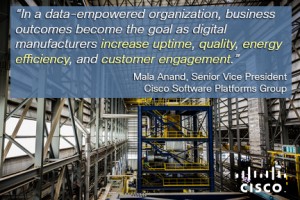Since the late 18th century, innovations have fueled modernization in industrial engineering, management and processes that have shaped manufacturing businesses we know today. From manual tasks’ mechanization through moving assembly lines and mass production systems, industrial revolutions resulted in profitability and growth that enabled global economies to prosper. Presently, another revolution is underway – a revolution resulting from access to hyper-distributed computing for manufacturing organizations to excel in their competitive marketplaces. Utilizing advancements in technology and software, manufacturing operations can become increasingly fluid through processes that resource data and analytics to generate just-in-time automation. And in this transformation, traditionally physical assets are metamorphosed into digital assets that become sources of invaluable insights.

With the opportunity to collect data and generate line intelligence in real time, assets such as industrial machinery, trucks, conveyer belts, and a variety of other manufacturing equipment become integral parts of an active network to drive informed decisions, improve business operations, reduce costs, and enhance customer experiences.
Along with companies in other industries, manufacturing organizations have begun to acknowledge, and even experience, the wealth of data that is generated at the network’s edge – data that offer the most value and insight when analyzed in real-time right where it’s created. To best address this opportunity, executive leadership must take a top-down approach to strategize, plan and implement a comprehensive, organization-wide digital transformation.
Interested in learning more? Read Analytics: Building a Winning Strategy in Manufacturing for additional perspective on why manufacturing companies should begin to think more like technology companies.
Thanks for an informative article Mala.
The possible efficiency savings are gigantic, that’s for sure
See how KONE is using real-time data and analytics improve the quality and productivity of its service operations
http://cs.co/9002BXXhy #Cisco #TechRadar